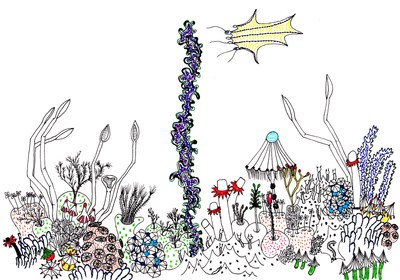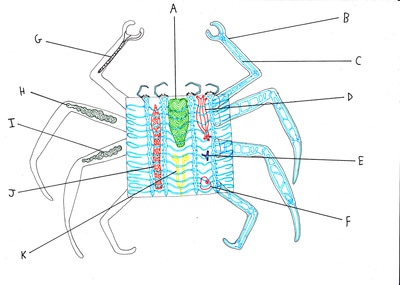|
While it doesn’t exactly have the most original plot or most complex characters, the setting of the movie Avatar is really interesting. I enjoyed the special effects and the feeling of immersion in a rich variety of growth. There were glowing plant-things and insect-things. There were also some strange megafauna. My favorite were the flying dinosaur-like beasts. Furthermore, all the trees were connected by some sort of communication system that allowed the entire biosphere of the planet Pandora (actually a moon in orbit around a gas giant) to act as a single brain. This brain physically connected with various animals at various interface nodes. The animals were capable of linking with each other even across species through specialized organs that resemble bundles of fiber-optics. Pandora is definitely a place I wouldn’t mind visiting.
0 Comments
If you need some guidance in creating scientifically accurate and plausible habitats and organisms for your exobiology project, the Speculative Evolution Wiki is a great resource to start with. There is a page on the types of alien planets thought to exist. There is a page on alternative biochemistries. There are pages covering the wide variety of approaches Earth life takes to common problems, such as movement, perception, reproduction, defense, and the various ways that an organism might draw energy from its environment.
The Future Is Wild is a book (and television miniseries) exploring what life might be like five million, one hundred million, and two hundred million years from now. Squids evolve to walk on land. Fish evolve to fly in air. Slime molds trap and dissolve passing flyers. Corals are replaced by red algae. Jellyfish are huge. Sharks are social. Birds spit fire. The movement of the continents has much to do with natural selection and this is part of the story too.
Artist Emily Holland is writing a trilogy about a human expedition to the planet Ilion, a tidally-locked planet of mobile red plants and colonial ambush predators. Sunrise On Ilion is her official website where you can watch the project as it unfolds. She covers the geography, climate, geology, and especially the biology of this fascinating planet. You can also follow her on her DeviantArt page.
Gert van Dijk and Sigmund Nastrazzurro create the Planet Furaha website (also known as Phoenicis 4), detailing the astronomy, climate, geography, and biology. There are maps of various projections and many animations showing the complex way the animals walk, swim, and fly. There are radially-symmetrical animals and bilaterally-symmetrical animals. There are also interesting plants. There are anecdotes from the lives of the biologists living there. I really hope it turns into a book. Sigmund also writes a separate blog on graphic design and speculative biology in general.
Wayne Douglas Barlowe is an artist and the author of Expedition, the story of mankind’s visit to planet Darwin 4, home of large, blind, sonar-using liquivores. His paintings of alien plants, animals, and landscapes are amazing. He describes their physiology and behaviors. This is one of my favorite books that I dig out of storage from time to time just to look through. It has inspired me to make my own exobiology art books out of my old doodles, but at the moment I am far too busy.
The trends on Darwin 4 include large size and leg reduction. Some animals have six legs, others four, and others only two. Many have their rear legs fused into one or else have keels to support their weight. Others have their front legs fused into one. The gyrosprinter has both its rear and front legs fused, leaving it with two legs in a row. There are even monopods. Most animals are hermaphrodites, eyeless, rely on sonar, and digest meals outside the body before sucking them up, though there are exceptions to all of these trends. I think my favorites are the tundra creature whose head detaches to become a flying animal while the lower body becomes nothing more than a living shelter, and the groveback – a creature that spends its life sleeping and growing underground while trees cover its back. Barlowe also paints demons, hellscapes, and other awesome things and is available for commissions or licensing. Check out his website. |
Like alien art? Check out my store.
Copyright © 2017



 RSS Feed
RSS Feed